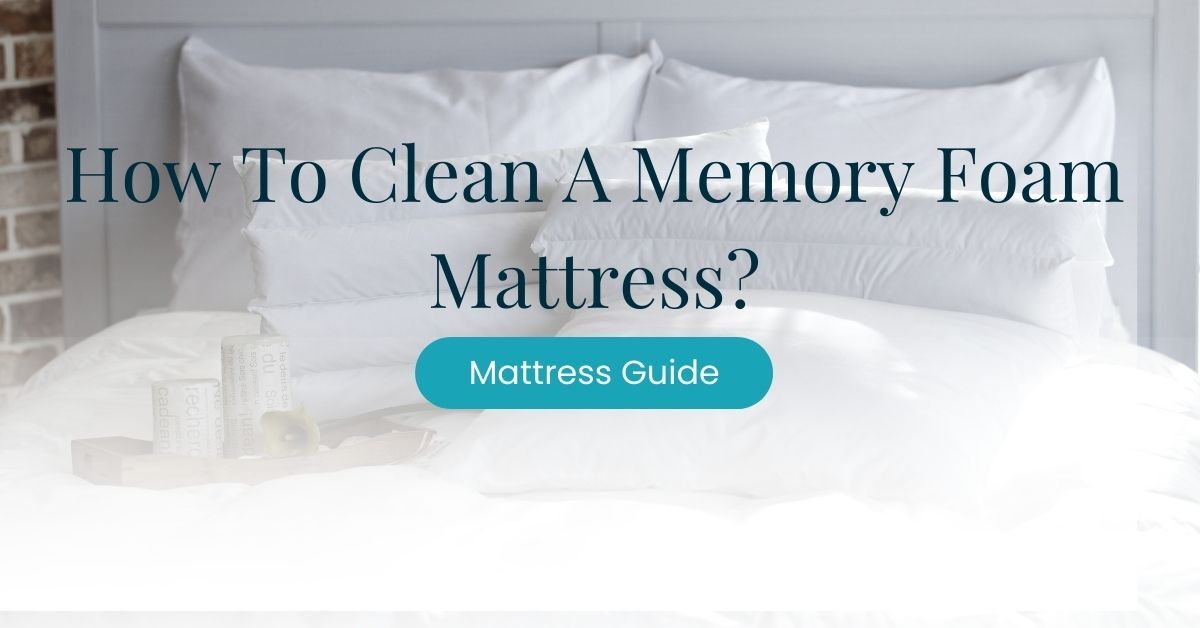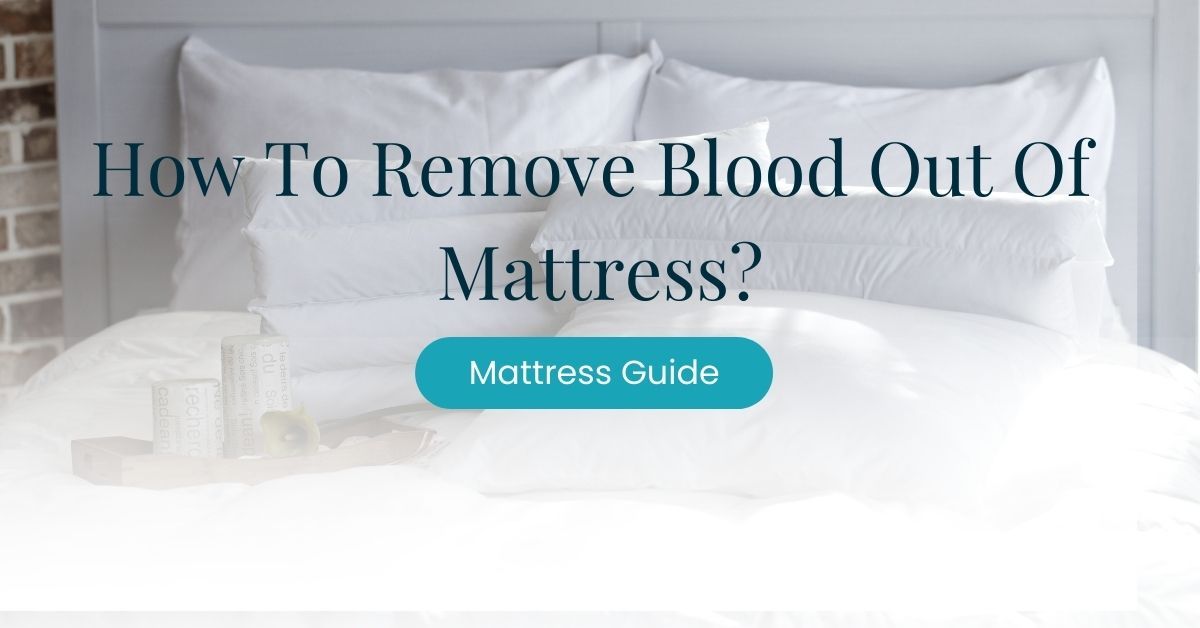Are you facing the challenge of properly storing your mattress, perhaps due to a temporary work or leisure trip overseas or because you’re renovating your home? Storing your mattress means it remains safe and secure.
Trust me, I know firsthand the consequences of improper storage – I once carelessly left my mattress propped up against a wall, only to discover an unsightly indentation later.
Don’t fret, I’ll reveal the secrets of proper mattress storage to ensure that once out of storage, it’s as good as it went in. Sleep soundly, knowing that your investment is protected while you’re away.
8 Steps of Properly Storing a Mattress
While mattresses are made to withstand pressure and weight, they’re vulnerable to moisture, blunt force, and pests (yes, even stored latex mattresses). To protect against these damaging elements, follow these eight steps:
Step 1: Remove All Bedding
First, you’ll need to remove every bedding accessory in your mattress. These include sheets, blankets, pillows, mattress pads, protectors, and toppers.
Take the used bedding, throw it into your washing machine (and set the appropriate wash cycle).
Dry them afterwards by using a dryer or hanging them outside to dry. Be careful to read tags; some bed accessories don’t do well when sun or machine dried.
Step 2: Do a Thorough Visual Inspection
Inspect your mattress and look for moderate (mild signs are typical) signs of wear and tear, such as indentations, sagging, lumpiness, staining, and pungent smell. You can start by checking the topmost layer and working through the bottom.
If you see moderate signs of wear and tear, we recommend getting the mattress fixed as soon as possible before you go to the next step. The next step is cleaning, and doing it when your mattress has moderate damage will cause more problems.
If a complete fix isn’t possible, mild cleaning will do just fine to prevent damaging your mattress even further.
Step 3: Clean the Mattress
We recommend cleaning your mattress before storing it away for the following reasons:
- A clean mattress is not attractive to pests.
- Convenient. If you want to use your mattress from storage, you can just unpack it.
- Pungent scents will not linger while in storage.
Follow these mattress cleaning tips:
- Vacuum the mattress using the fabric attachment (which comes with a nylon brush). Focus on the top and bottom layers and work your way to the nook and crannies.
- For stains with a pungent smell, use baking soda and vinegar. You can also use a small amount of dishwashing soap.
- After 10 minutes, blot away the solution you’ve applied to the stains.
- You can use an enzyme cleaner if stains and smells don’t come out. Hydrogen peroxide may also work.
- You can also use a spray or two of your favourite linen deodoriser (optional)
Additional Tip: If you don’t have the time to clean your mattress, you can call for pros to do it.
Step 4: Air Dry the Mattress
Once you’re done cleaning, the next step is drying the mattress. You can do this by:
- If you have an air-conditioner, use its dehumidifying option (slow)
- Use an electric fan and direct the flow of air into the wet surface of the mattress (fast)
- Place the mattress in a well-shaded area with a cool breeze of wind (fast)
- Use a hair blower in its hottest mode and direct it towards the mattress (fast)
- Place the mattress outside to sun-dry (fastest)
However, do note that a hair blower and sun-drying should only be used on coil-based mattresses such as pocket coil and innerspring. Using heat to dry memory foam and latex mattresses will damage them.
Step 5: Prepare For Storage
Once your mattress is dry to the touch, you can prep it for storage. To start, buy a heavy-duty mattress bag you can find in your local mattress store. You can also search online and type “mattress bags UK”.
Once you put the mattress inside the bag, ensure it’s completely waterproof. Although making it completely airtight is impossible, using a couple of packing or duct tape will do the trick.
Also, take note that while a storage bag may be completely waterproof, condensation (or moisture buildup, in layman’s terms) can happen inside the bag—causing the growth of moulds. To prevent this, a couple of silica gel packets will work wonders.
Step 6: Choosing a Good Storage Location
You can store your mattress anywhere if it’s cool, dry, and well-ventilated. The problem is it’s hard to find a location that ticks all three boxes. Popular mattress storage locations are:
- Spare bedroom
- Basement
- Storage room or storage unit
- Dedicated mattress storage room
Storing your mattress in the attic can be damaging as most attics are warm and saturated with high humidity. Your best bet is to rent a dedicated storage facility with climate-controlled storage units to keep your mattress 100% moisture protected.
If you’re using a spare room in your home, here are helpful tips to follow:
- Clean the room before storing the mattress and check if there are pests.
- Periodically inspect and clean the storage room at least once every month.
- Run a dehumidifier in the room for several hours before storing the mattress.
Step 7: Transporting the Mattress
If you’re moving into a new residence or moving out of your current one, correctly transporting your mattress is essential. You can choose between moving the mattress yourself or hiring a moving company to do it for you.
If you want to move it yourself, you’ll need a large vehicle—we’re talking about an SUV or a pick-up truck. But suppose you want to hire a moving company to do it for you, you just have to guide them and pay them once the job is done.
If you’re looking for a moving company, you can browse the internet and type “removal companies UK”, “moving companies UK”, “best moving company UK”, and so on.
If you want to move your mattress, learn how to transport a mattress yourself.
Step 8: Storing the Mattress Properly
Proper environmental conditions and storage position is essential when storing your mattress. To ensure you’re on par with these requirements, do these:
- Lay the mattress flat on the floor, not sideways, as this can cause indentations and sagging in the mattress in the long run which is common in memory foam mattresses.
- Check the surroundings and ensure no heavy object can fall on the mattress.
- Don’t place heavy objects on the top of your mattress to prevent sagging.
- Ensure the room is moisture-free and away from direct sunlight.
Can You Store A Mattress In Your Garage?
Storing a mattress in a garage is not really the best idea. Garages are often prone to temperature and humidity fluctuations, damaging your mattress and impacting its overall quality.
Furthermore, garages are often not the cleanest spaces, meaning that your mattress may be at risk of attracting dust, insects, or other debris.
While it may be tempting to use your garage as a storage solution, it’s worth considering the alternative options above.
How Long Can You Store Your Mattress?
You can store your mattress for a long time, easily a few years. However, keeping a mattress for a long time is only possible if the optimal conditions are met. Such as:
1. Ensuring a moisture-free, sunlight-free, and pest-free environment.
2. Ensuring the mattress is packed correctly and sealed.
3. Ensuring the mattress is placed flat, not on its side.
Should You Roll a Mattress For Storage?
Nope, we do not recommend rolling up your mattress for storage. For one, keeping it rolled while in storage can damage the mattress. Premature indentations and sagging may occur in this condition.
The second problem is that you can’t roll a mattress without special equipment. Manufacturers can only roll a mattress thanks to specialised equipment called an industrial roller.
We recommend leaving your mattress as is and don’t try to roll it, as you can damage it.
Can You Store a Mattress On its Side?
Yes, you can. However, we don’t recommend storing a mattress on its side if you plan to keep it long-term (say more than a month of storage).
Storing a mattress on its side can cause the mattress to sag and show indentations on its surface. Doing this is also risky, as the mattress can fall over different objects, which can puncture the material.
Can You Store a Tempur-Pedic Mattress On its Side?
We advise against this as Tempur-Pedic mattresses have visco-elastic properties that make them sensitive to movements.
If you store your Tempur-Pedic mattress on its side, the viscous foam may settle along the edges of the bed—making it virtually unrestorable.
To properly store a Tempur-Pedic mattress, keep it laid flat and ensure no objects can fall over.
Can I Store a Mattress On its Side for 2 Weeks?
Yes, some mattresses can be laid on their side for a maximum of one month. However, we recommend not storing a mattress on its side as it can cause structural damage to your mattress as it bends, as well as permanent indentations, sagging and lumpiness.
If your mattress is coil-based, it should be fine while stored on its side for two weeks. For foam-based, we advise against storing them on their sides as they can be damaged beyond repair.
Can You Fold a Mattress For Storage?
Nope, trying to fold your mattress for storage will most likely result in mattress damage. Mattresses are thick and dense, meaning they can’t be folded.
If you have a machine that can fold a mattress in half for better storage, we encourage you not to do it, too, as doing so will only cause irreparable damage to your mattress.
How to Prevent Bed Bugs While the Mattress is in the Storage Unit?
Ensuring your mattress is clean, and well-packed is the only thing you need to do. Bed bugs primarily feed from dead skin cells in your mattress; if it’s clean, there will be no food for them.
And if your mattress is well-packed, bed bugs wouldn’t be able to go inside your mattress in the first place. Simply put, a clean and well-packed mattress isn’t a suitable habitat for bed bugs.
Now You Know How To Store A Mattress Properly
So there you have it – the secrets to proper mattress storage to ensure that your investment remains in top condition. Whether you’re going on a temporary trip overseas or undergoing home renovations, keeping your mattress safe and secure is important.
Whether it’s a hybrid mattress or another mattress type, by following these storage tips I’ve shared today, you can rest assured that your mattress will be ready for a good night’s sleep when you return.





